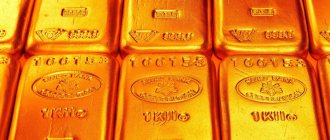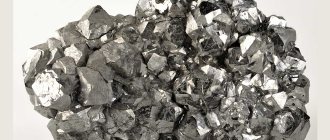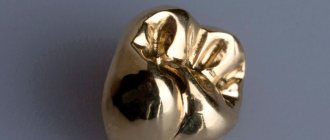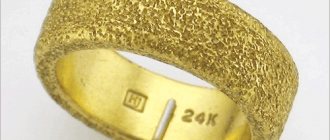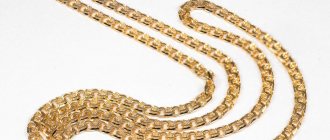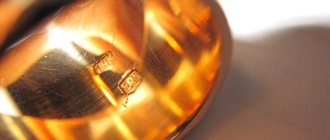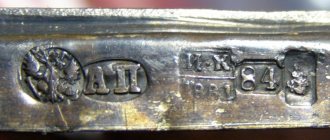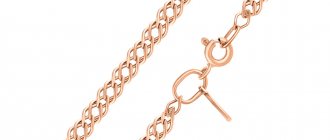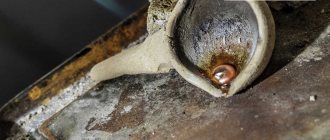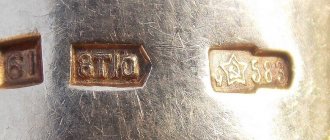If you decide to invest in precious metals by purchasing ingots, then the capacious concept of an ingot, as a cast metal billet for further processing, which the encyclopedia gives, will clearly not be enough. This article covers questions regarding bank gold bars: what kind of gold bars there are, the requirements of Russian standards for gold, silver, platinum and palladium bars, types of bars according to production technology.
In addition to these precious metals, according to the federal law “On Precious Metals and Stones”, precious metals include the platinum group metals: iridium, rhodium, ruthenium and osmium. But in Russian banks the range of bullion is presented only in four well-known metals, and even then not always. We will consider them in this article.
Precious metal bars are standard and measured bars manufactured at Russian refineries and comply with state and industry standards of the Russian Federation, as well as foreign-made bars that meet international quality standards established by The London Bullion Market Association (LBMA) and participants in the London Platinum and Palladium Market (LPPM).
Each ingot must meet government and industry standards. Russian GOST standards for standard and dimensional ingots are different. If the ingot does not meet the established standards, it is sent for remelting by the refinery manufacturer.
Ingots
Measured ingots are Russian-made ingots with manufacturer's markings and a pure metal content (fineness*) of at least 99.99% and weighing from 1 to 1000 grams. This is the bulk of small-weight bars available for purchase through Russian banks.
Fineness is the proportion of the base precious metal in the alloy. The test shows the number of parts of the noble metal being tested per 1000 parts of the alloy.
GOSTs establish not only requirements for the appearance, weight, and marking of the ingot, but also determine the maximum total presence of impurities for various grades of precious metal, but without standardizing the content of an individual component.
There are no Russian GOST standards for palladium ingots!
Measured gold and silver bars
For measured gold and silver bars, the requirements are established by GOST R 51572-2000 and GOST R 51784-2001, respectively. According to these standards, Russian-made measured gold bars and measured silver bars must meet the following requirements:
- GOSTs establish the maximum deviation of the ingot mass, the size of the ingot sides (length and width) for each weight. The thickness of the measuring ingot is not standardized. In addition, the standards allow the production of ingots of other sizes, weights and even shapes as agreed by the manufacturer and the customer.
- The surface of the ingot must be free of fat deposits, burrs, cracks, delaminations, slag and other foreign inclusions.
- The surface of the ingot may be concave and wavy due to temporary shrinkage during metal crystallization.
- Each bar must be clearly and legibly marked on the face. The imprint of inscriptions on ingots can be convex or depressed, depending on the manufacturing technology of the ingot. Merging of letters and numbers in markings, as well as corrections, is not allowed. It is allowed to apply a trademark or other symbols of the customer to the surface of the measured ingot by agreement with the manufacturer. The front side of the ingot must contain:
- the inscription “Russia” in an oval;
- nominal weight of the ingot in grams (1);
- name of metal (“GOLD”, “SILVER”);
- mass fraction of precious metal in the ingot (sample) (2);
- manufacturer's trademark (3);
- bar number (4) (for bars weighing 50 grams or less, the bar number can be printed on the reverse side).
We recommend reading: Gold bars in Sberbank or what the market leader offers
Platinum bars
Platinum bars weighing from 5 to 500 grams must comply with GOST R 51704-2001, according to which:
- GOST establishes the dimensions of ingots (length and width) for each weight with a maximum deviation in weight. The thickness of a platinum ingot is not standardized. It is allowed to manufacture ingots different from those described by the standard (in size, weight and shape) by agreement between the manufacturer and the customer.
- The surface of the ingot must be free of grease deposits, cracks, cavities, delaminations, burrs and inclusions of foreign particles. The reverse side can be matted.
- Platinum ingots must be made in stamped form.
- The marking of the bar must be clear and legible, without merging of symbols or corrections. The imprint of the inscriptions on the ingots must be convex. Additional symbols (trademarks) of the customer are allowed on both the front and back sides of the ingot. Required elements for marking a platinum ingot on the front side:
- the inscription “Russia” in an oval;
- nominal weight of the ingot in grams;
- name of metal (“PLATINUM”);
- mass fraction of platinum in the ingot (sample);
- manufacturer's mark;
- code (number) of the ingot (for small-weight ingots up to 100 grams inclusive, it is allowed to put the ingot number on the reverse side).
Manufacturing technology
According to production technology, ingots are:
- stamped;
- cast;
- powder.
The mass of stamped bars is up to 500 grams. They are marked SSHZ. These are the most expensive types of bullion.
Cast gold bars are cheaper than stamped ones and are designated SLZ. Powder bars are made from powder by electrolytic deposition and are the cheapest to produce. Therefore, powder ingots will be cheaper.
Certificate
Each ingot must be accompanied by a manufacturer's certificate , which indicates the metal of the ingot, fineness, number, weight of the ingot, date of manufacture and name of the manufacturer.
Because Each ingot has a unique number, so the movement of the ingot is always easy to track from the manufacturer to the final owner. The manufacturer is indicated in the certificate, but even if the certificate is lost or its contents are unreadable, the manufacturer’s trademark (stamp) is always present on the bar itself. In addition, each manufacturer uses its own ingot numbering system, which makes it possible to determine the manufacturer by the ingot number. For example, the letters “NV” in the ingot number indicate that this ingot was produced at the Novosibirsk Refinery - at the Krasnoyarsk Non-Ferrous Metals Plant, “Ek” - Yekaterinburg Non-Ferrous Metals Processing Plant, etc.
Prices per gram of different gold samples.
The price at which gold is accepted in pawn shops is always lower than the current Central Bank rate.
Pawnshops also do not have a uniform rate. Everyone forms their own course independently. If you focus on the Central Bank exchange rate, which as of April 30, 2022 is about 2.6 tr. per gram, pawnshops underestimate it by 30-50%.
Author of the article, financial expert
Dmitry Tachkov
Hello, I am the author of this article. I have a higher education. Qualified investor. Finance and credit specialist. Worked in commercial banks of the Russian Federation for more than 3 years. I have been writing about finance for more than 5 years. Please rate my article, this will help improve it.
about the author
Useless
0
Interesting
9
Helped
9
How much does a measured gold bar weigh?
The standards provide not only a limit value for the mass of a measuring ingot of 1 kg, but also a “ruler” of weights indicating the dimensions for each weight. Although, as already mentioned, an ingot can weigh as much as you like and have a completely different shape, even round, if the customer wants it - the standards allow this. The range of measured gold bars is most fully represented on the Russian banking market. The weight and dimensions of a measured gold ingot according to Russian GOST are shown in the table.
| Ingot designation* | Ingot weight, g | Ingot dimensions, mm | ||
| Nominal | Prev. deviation | Length | Width | |
| SSHZ 1 | 1 | +0,03 | 12,0 — 15,0 | 7,0 — 9,0 |
| SSHZ 5 | 5 | +0,04 | 22,0 — 25,0 | 13,0 — 15,0 |
| SSHZ 10 | 10 | +0,05 | 24,0 — 29,0 | 13,5 — 17,0 |
| SSHZ 20 | 20 | +0,05 | 29,0 — 33,0 | 15,0 — 19,0 |
| SLZ 20 | 20 | +0,05 | 23,5 — 27,0 | 11,5 — 13,0 |
| SSHZ 50 | 50 | +0,06 | 36,0 — 48,0 | 21,0 — 28,0 |
| SLZ 50 | 50 | +0,06 | 30,5 — 32,0 | 16,0 — 17,0 |
| SSHZ 100 | 100 | +0,06 | 54,0 — 56,0 | 31,0 — 33,0 |
| SLZ 100 | 100 | +0,06 | 40,0 — 43,0 | 20,0 — 23,0 |
| SSHZ 250 | 250 | +0,08 | 79,0 — 81,0 | 46,5 — 48,0 |
| SLZ 250 | 250 | +0,08 | 52,0 — 64,0 | 29,0 — 32,0 |
| SSHZ 500 | 500 | +0,10 | 98,5 — 102,0 | 58,5 — 60,0 |
| SLZ 500 | 500 | +0,10 | 80,0 — 86,0 | 35,0 — 38,0 |
| SLZ 1000 | 1000 | +0,10 | 105,0 — 116,0 | 48,0 — 52,0 |
To designate the type of ingot, the following abbreviations are used: SSHZ(*) - stamped gold ingot; SLZ(*) - cast gold ingot; (*) is the mass of the ingot.
According to the standard, measured silver bars can be in similar weights as gold ones, but in fact, the most popular bars are those weighing 1000 grams, and a bar weighing 1 gram is generally impossible to find.
We recommend reading: Russia's gold reserves: history and current realities
Specific points
Now let's talk about some details. First of all, about standard ingots. If they are mass-produced, their weight does not exceed 13.5 kilograms. There may be large values, but this is an exception. Most ingots produced range from 10 to 13.5 kg. It is also necessary to note the difference in the measurement of masses. For example, in our country it is customary to use a unified measurement system based on the gram. But if you go to an international stock exchange, for example the London one, then the precious metal will probably be measured in troy ounces.
Standard Ingots
Standard ingots are ingots of precious metals produced and marked by Russian (previously 1992 - Soviet) refineries in full compliance with state and industry standards in the following ratios of alloy weight* and ingot fineness:
| Ingot metal | Ligature mass, g | Sample no less, % |
| gold | 11000 — 13300 | 99,95 |
| silver | 28000 — 32000 | 99,90 |
| platinum | no more than 5500 | 99,90 |
| palladium | no more than 3500 | 99,90 |
Ligature mass (mass in the ligature) is the actual total mass of the ingot containing the precious metal. Essentially, it is the result of actually weighing the ingot on a high-precision laboratory scale.
For standard bars, the requirements are established by interstate standards: gold standard bars - GOST 28058-89, standard silver bars - GOST 28595-90, platinum in standard bars - GOST 31290-2005, palladium in standard bars - GOST 31291-2005.
Standard gold and silver bars
Ingots must meet the following requirements in accordance with the specified GOSTs:
- The weight of a standard gold bar can be from 11,000 grams to 13,300 grams. The mass of a standard silver bar can be from 28,000 grams to 32,000 grams. By agreement between the customer and the manufacturer, the weight of the ingot may differ.
- Gold bars must have the shape of a regular truncated pyramid with certain dimensions of the base sides and height (thickness). The refinery has the right to produce ingots of other shapes and sizes as agreed with the customer.
- The standards establish grades of gold and silver, and also determine the composition of impurities and their maximum content in the alloy.
- The surface of the ingot must be free of sagging, burrs, grease stains and deposits, and the presence of slag and other foreign inclusions is not allowed.
- On the surface of the ingot, the presence of stripped areas with a depth of no more than 1 mm for standard gold bars and no more than 3 mm for standard silver bars is allowed. There may be a concavity on the surface of the ingot as a result of metal shrinkage with a depth of no more than 5 mm.
- A standard gold/silver bar on its large base should contain the following markings:
- ingot number;
- grade of precious metal;
- mass fraction of precious metal (sample);
- ingot mass;
- symbols of the country of origin;
- refinery trademark;
- year of production of the ingot.
Standard platinum and palladium bars
Standard platinum and palladium ingots must meet the following requirements in accordance with the specified GOSTs:
- The maximum weight of standard platinum bars can be 5500 grams. The maximum mass of a standard palladium ingot is 3500 grams. By agreement between the customer and the manufacturer, ingots of other weights can be produced.
- Ingots must be rectangular in shape with certain side dimensions: length 100 + 3 mm, width 65 + 2 mm, the height of the ingot is not regulated. The manufacturing refinery can produce platinum and palladium ingots of other shapes and sizes as agreed with the customer.
- GOSTs establish acceptable grades of platinum and palladium and the composition of impurities, as well as the maximum content of each impurity component in the alloy.
- The surface of a standard palladium platinum ingot must be machined. The presence of any foreign inclusions is not allowed. The standard allows the presence of stripped (coined) places with a depth of no more than 1 mm on the sides of the ingot without markings. The total number of cleaned areas on the surface of the ingot should be no more than five.
- The front side of the ingot must contain markings that include the following mandatory details:
- Symbols of the state of origin;
- Trademark (stamp) of the manufacturer;
- Letter (symbol) of the precious metal (for platinum - “Pt”, for palladium - “Pd”);
- Mass fraction of precious metal in percent (fineness);
- Weight of the ingot in grams (designations “g” and “g” are allowed)
- Ingot number (code)
We recommend reading: Gold bullion prices in the CIS countries
In addition to the indicated imprints, the ingot may contain the year of manufacture and additional symbols (logo) of the customer company. All markings must be clear, the lines must be without breaks.
The location of marking elements on the surface of a standard ingot is regulated by a regulatory document of the manufacturing state, and in its absence, it is agreed upon between the manufacturer and the customer.
Standard ingots of excellent quality, high purity and the mark of a trusted manufacturer receive the “London Good Delivery” status, which opens the refinery’s gateway to the international market. “Reliable Delivery” bars are highly valued in both the Russian and international precious metals markets.
Switzerland and gold are as connected as Bordeaux and wine
Journalist Gilles Labarthe notes that, in addition to a long-standing historical tradition, Switzerland and gold are connected because the country has all the necessary infrastructure and well-functioning services for processing the precious metal. Until a few years ago, the World Gold Council, the industry's main lobbying group, was based in Geneva.
According to Labarthe, gold in Switzerland is processed according to the “four nines” rules - this indicates the exceptional purity of the metal. Thus, owning a Swiss-made gold bar is a guarantee of the highest quality.
Refiners are typically service businesses that receive material from their customers and thoroughly refine the gold. At the same time, their main product is bars, but they also produce semi-finished gold products, including medals and coins. The refiner's client decides for himself: to take the gold, sell it to the refiner himself, or put it on the market.
Three of the five refineries awarded the title of “judges” for gold quality control by the LBMA (London Bullion Market Association) are based in Switzerland - Metalor, Argor-Heraeus and Pamp.
If you study the geography of Swiss refining companies, you will notice that they are all located next to each other. Apart from Metalor, located in Neuchatel, the other three are based in the district of Mendrisiotto (this is the southern part of Ticino), close to the Italian border. And this location is not accidental - it is determined historically: in the 70-80s of the twentieth century, Italy was the world's largest manufacturer of jewelry, and purchased raw materials in Ticino.
Frederick Panizutti notes that the value of gold has quadrupled over the past decade. In his opinion, it is gold that today plays the most important role in preserving capital. This is due to people's distrust of financial markets and banks. Buying gold is considered a specific type of insurance because it has no credit risk. You can print money as much as you like, but you cannot print gold.

